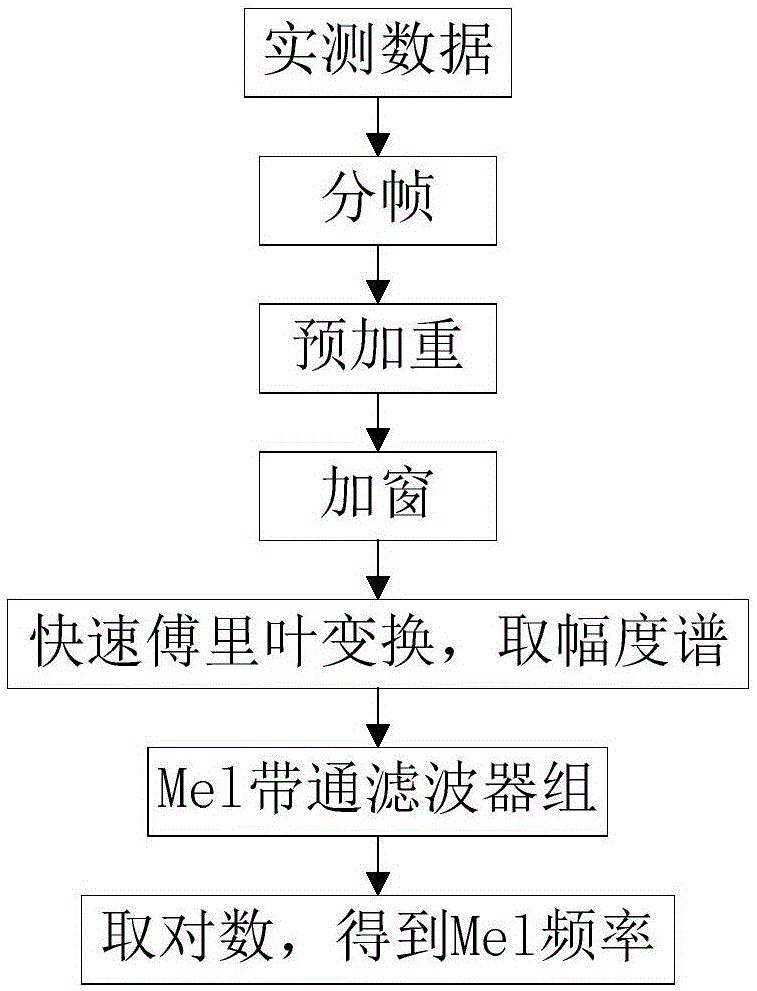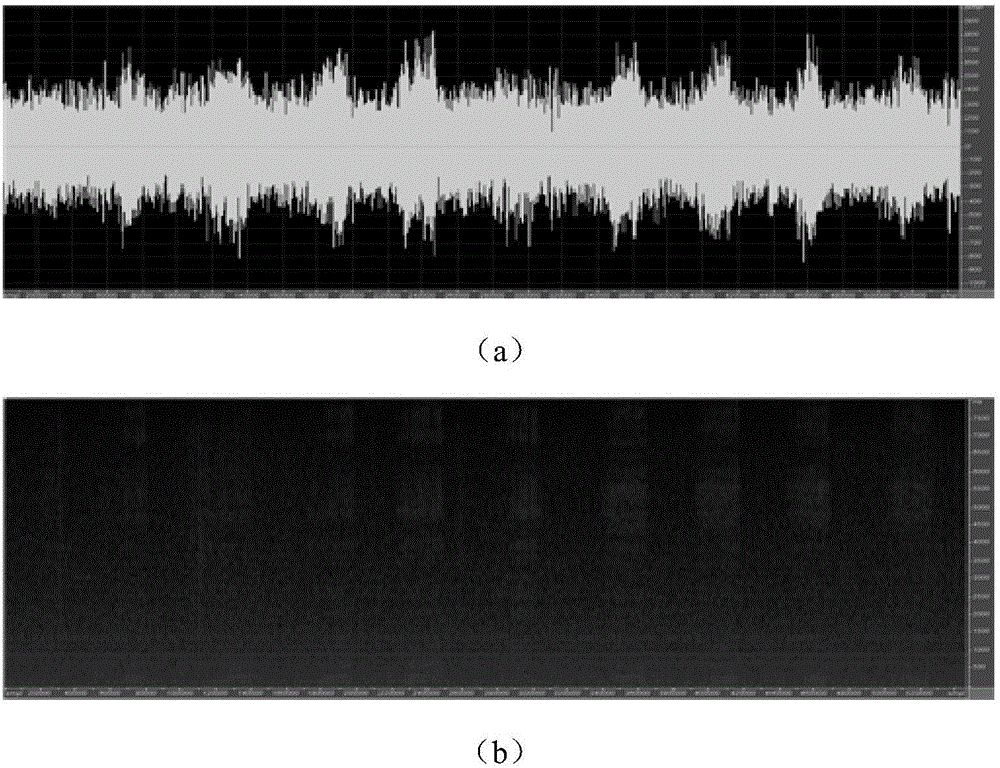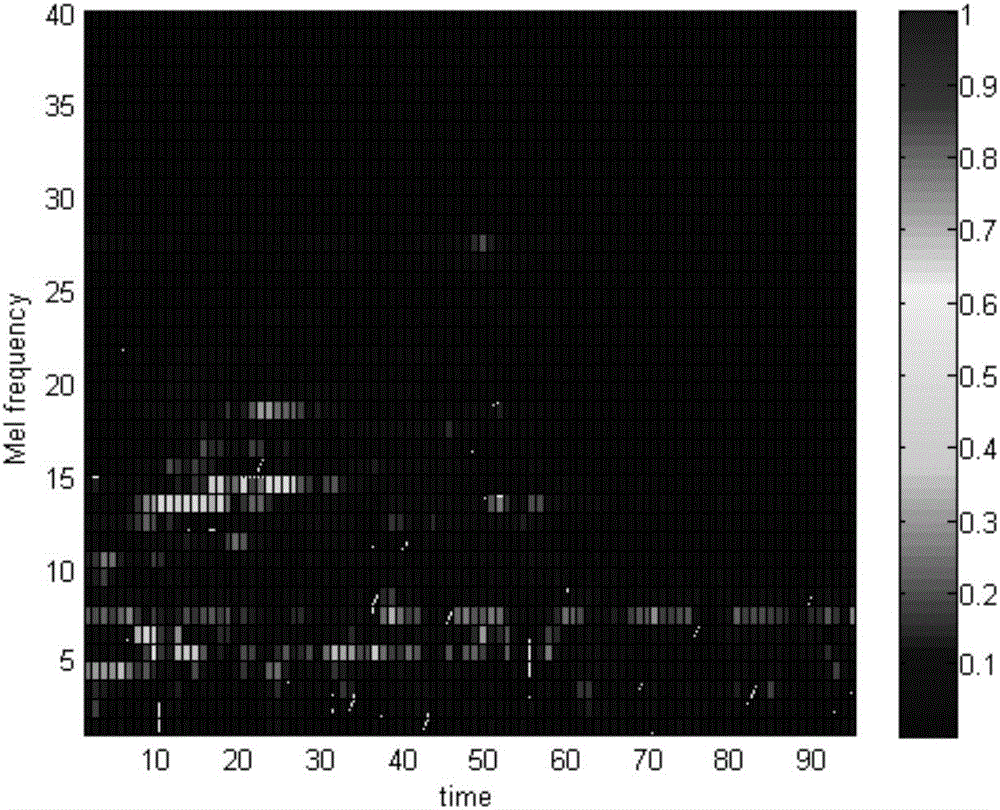Supervised snore source identifying method
A recognition method and supervised technology, applied in the field of non-speech recognition, can solve the problems of complex multi-layer neural network structure, many training parameters, low learning feature efficiency, etc., to achieve accurate recognition results, few weight parameters, and excellent performance. Effect
- Summary
- Abstract
- Description
- Claims
- Application Information
AI Technical Summary
Problems solved by technology
Method used
Image
Examples
Embodiment 1
[0061] The present embodiment has supervised snore source identification method, and the steps are as follows:
[0062] Step 1, through human auditory judgment and figure 2 After observing and confirming the time-spectrum diagram shown, the measured data is marked, wherein, figure 2 (a) is the time-domain diagram of the measured data, figure 2 (b) is the frequency domain diagram of the measured data. Count the start and end positions of the pure snore segment in the EXCEL table.
[0063] Step 2. Based on the starting point of the snoring sound recorded in the EXCEL table as the standard, Mel frequency transformation is performed in frames, and the spectrum amplitude is normalized to form a data sample, such as image 3 shown.
[0064] combine figure 1 , the snoring signal is divided into frames and Mel frequency conversion processing is as follows:
[0065] Step 2-1. Taking the recorded snoring start point as the standard, the data with a duration of 1 second after th...
PUM
 Login to View More
Login to View More Abstract
Description
Claims
Application Information
 Login to View More
Login to View More - R&D
- Intellectual Property
- Life Sciences
- Materials
- Tech Scout
- Unparalleled Data Quality
- Higher Quality Content
- 60% Fewer Hallucinations
Browse by: Latest US Patents, China's latest patents, Technical Efficacy Thesaurus, Application Domain, Technology Topic, Popular Technical Reports.
© 2025 PatSnap. All rights reserved.Legal|Privacy policy|Modern Slavery Act Transparency Statement|Sitemap|About US| Contact US: help@patsnap.com



